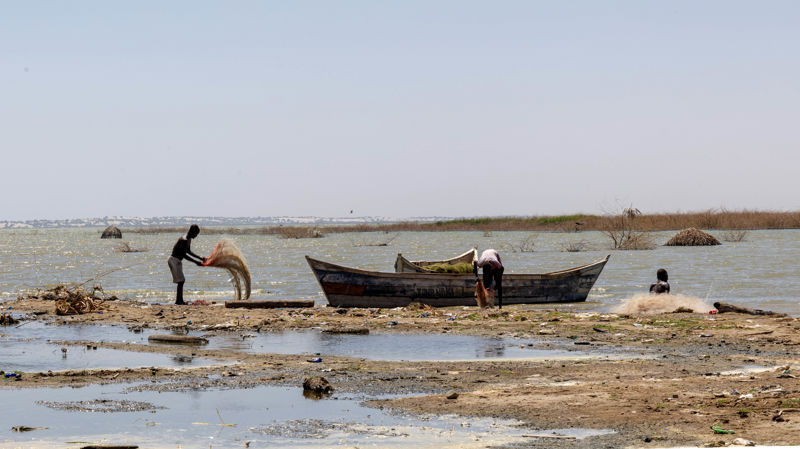The flood destroyed homes, but the alert saved lives – this is how early warnings save people in Kenya

Kenya suffers from cycles of flooding and drought. Climate change is increasing and intensifying both. The Red Cross helps Kenyans prepare for the threats of climate change.
In April 2025, the flash flood came without warning. Normally, the home village of Jeniffer Elim Ngitira in Turkana, Kenya, receives text alerts about floods. This time, however, the heavy rain came unexpectedly and there was no time to send a text. Because it was daytime, the family made it to a nearby school for safety. The flood devastated the family's property, muddied the water in the well and swept away the chickens in their coop.
"If we don't get an early warning, the flood damage is worse," says Jeniffer Elim Ngitira.
Kenya suffers from cycles of flooding and drought. Climate change has increased and intensified both. The Kenya Red Cross is developing early warning systems for floods and flood preparedness in northern Kenya. The Finnish Red Cross supports this work with the help of its donors and the Ministry for Foreign Affairs of Finland.
Flood destroyed a home and swept away belongings

In 2024, Kenya suffered record-breaking floods that drove thousands of people from their homes.
As the flood was approaching, Judy Elim, a single parent of five, received a warning message on her phone. She wrapped up the bedlinen and grabbed her youngest child in her arms. The family made it to safety. Thanks to the warning and the evacuation plan, no one from the community died. The flood destroyed Elim's home, along with her chickens, food, household items and clothes.
"I felt awful when the flood destroyed my home. Luckily, I was able to get essential supplies from the Red Cross, such as kitchen utensils and a tent. We also received food," says Elim.
The Finnish Red Cross Disaster Relief Fund provided support for responding to the flood damage.
More accurate weather forecasts at local level

The work of the Kenya Red Cross is part of the Finnish Meteorological Institute's FINKERAT project in Tanzania, Kenya and Rwanda. Its aim is to improve the weather forecasts provided by the meteorological institutes in these countries and to ensure that they reach everyone.
"Weather forecasts are made in the capital, Nairobi. The goal is for local forecasts to be as accurate as possible," says Oscar Lino, project manager at the Kenya Red Cross.
Since 2019, Kenya's Great Lakes have expanded, and their levels have risen significantly in the East African Rift. The rise in water levels is due to changes in factors like rainfall, brought about by climate change. Higher water levels have covered flood sensors, making it difficult for the authorities to monitor flooding.
"In Kenya, flooding is now occurring in completely new areas where it has not occurred before. People in these areas are used to adapting to drought, but not to floods," says Oscar Lino.
Rebuilding requires a lot from communities

A year later, Judy Elim had managed to build a new house.
"Building the new house was difficult. Materials had to be sourced from far away and transported here. Luckily, the villagers helped me. I wish that houses could be built to withstand floods so that I could provide a safe life for my children."
Jeniffer Elim Ngitira's house and livelihood have already been destroyed twice in a year. The area is located on the riverbank, making it difficult to protect it from flooding.
"This area is not safe. I wish we could find a safer place to live at a higher altitude."
The next flood is just around the corner.
"When the clouds pile up in the sky, we say that a flood is coming."

Text: Minttu-Maaria Partanen
Communications Specialist

